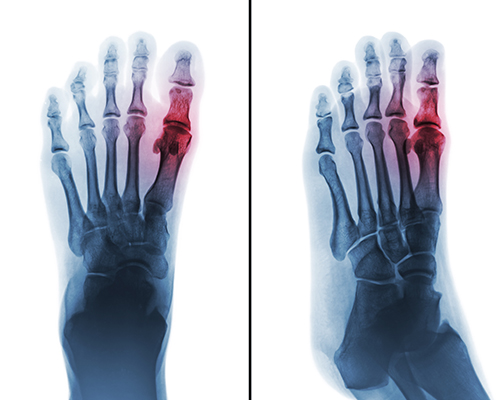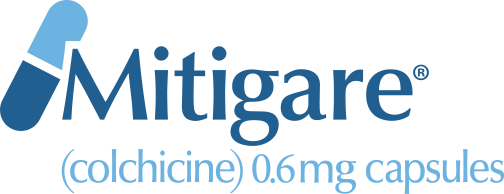
Gout, a painful form of inflammatory arthritis, causes swelling and redness in the big toe and feet, as well as other body parts.1 Gout results from an overproduction by the body of uric acid, which can build up in tissues if it isn’t excreted.2
More than 8 million Americans suffer from gout,1 but gout is not evenly distributed between genders. It’s nearly twice as common in men as in women, with a prevalence of self-reported gout of 13.6 cases in males versus 6.4 cases in females, out of 1,000.3 The rate as reported by doctors is slightly lower overall, but reflects the same ratio of higher prevalence in men.4,5
For men, the peak gout age frame is between 30 and 50, and it’s the most frequently-seen type of inflammatory joint disease.6 Gout is caused by too many purines in the body; purines are found in many foods and also occur naturally in our systems.1 Causes of excess purines can include over-consumption of purine-rich foods, alcohol and fructose (a type of sugar commonly found in processed foods and sugary beverages); being overweight, having high blood pressure and/or kidney problems, and use of certain drug therapies including loop diuretics and low-dose aspirin.6 When excess uric acid enters the tissues from the bloodstream, it can form sharp, needle-like urate crystals that cause inflammation and pain.1
To help keep gout from becoming more serious, it’s important to see your doctor and begin preventive treatment as soon as you can.
Men can help manage the risk of gout
Fortunately, there are things you can do to help prevent gout flares. First, talk to your doctor about medications that he or she can prescribe to help prevent flares in adults. Staying on your doctor’s prescription is very important and so are the following lifestyle changes.
- Drink more water. Drinking water may be a helpful part of a gout prevention plan because good hydration helps keep uric acid crystals from building up in the kidneys. Any fluids count towards your daily water intake, including coffee and tea, but not alcohol. The UK Gout Society recommends 8 glasses of liquids per day.7 Research shows that drinking water can mean fewer gout flares. An online survey of 535 people with gout (78% of whom were men) showed that those who drank five to eight glasses of water in a 24-hour period had a 43% lower risk of gout episodes than those who only drank one glass of water or less in a 24-hour period.8
- Limit alcohol intake. Alcohol may raise your risk of a gout episode, especially if you have more than one drink a day because it is high in purines.9 The body converts purines to uric acid. Beer appears to be worse than other alcoholic drinks because it contains yeast, which can also trigger a gout attack.9
- Avoid sweetened beverages. Avoid sugary beverages, especially those containing fructose, which have been linked to a higher risk of gout.10
- Choose foods that are gout-friendly. Avoid foods that are high in purines, such as seafood (mussels, scallops, trout, haddock, mackerel, tuna, sardines and anchovies), as well as liver, which can increase the uric acid in your blood. Choose healthy food options that are lower in purines, such as potatoes, squash and fruits and vegetables. Per the Mayo Clinic, a low-purine diet is great for anyone who currently has gout or has struggled with gout.11 Eat low-fat dairy products, which may also lower your risk of gout.12
- Exercise and manage your weight. Weight loss can help reduce your body’s burden of uric acid. Maintaining a healthy weight is key to many aspects of overall good health, including preventing gout flares. Talk with your doctor about sensible ways to reduce your weight if necessary, and increase your level of fitness with exercise.12
Once the first symptoms occur in an affected joint, gout nearly always recurs. The risk of a second gout attack is 62% after one year, 78% after two years, and 93% after 10 years if left untreated.13 Without treatment, these flares can become more frequent, last longer, and may spread to other joints. Eventually, the person with gout may develop tophi, which are visibly swollen bumps and nodules made up of uric acid crystals, and can be seen in the fingers, toes, elbows, knees and even the curve of the ear.1,14 Gout can limit movement and cause chronic pain.1
Fortunately, prescription medications can help prevent gout flares in adults. See your doctor if you think you are experiencing symptoms of gout flares and ask what you can do to help prevent flares.
NOTE: This article was not written by a medical professional and is not intended to substitute the guidance of a physician. These are not West-Ward’s recommendations for gout flare prevention, but rather facts and data collected from various reliable medical sources. For a list of resources and their attributing links, see below.
